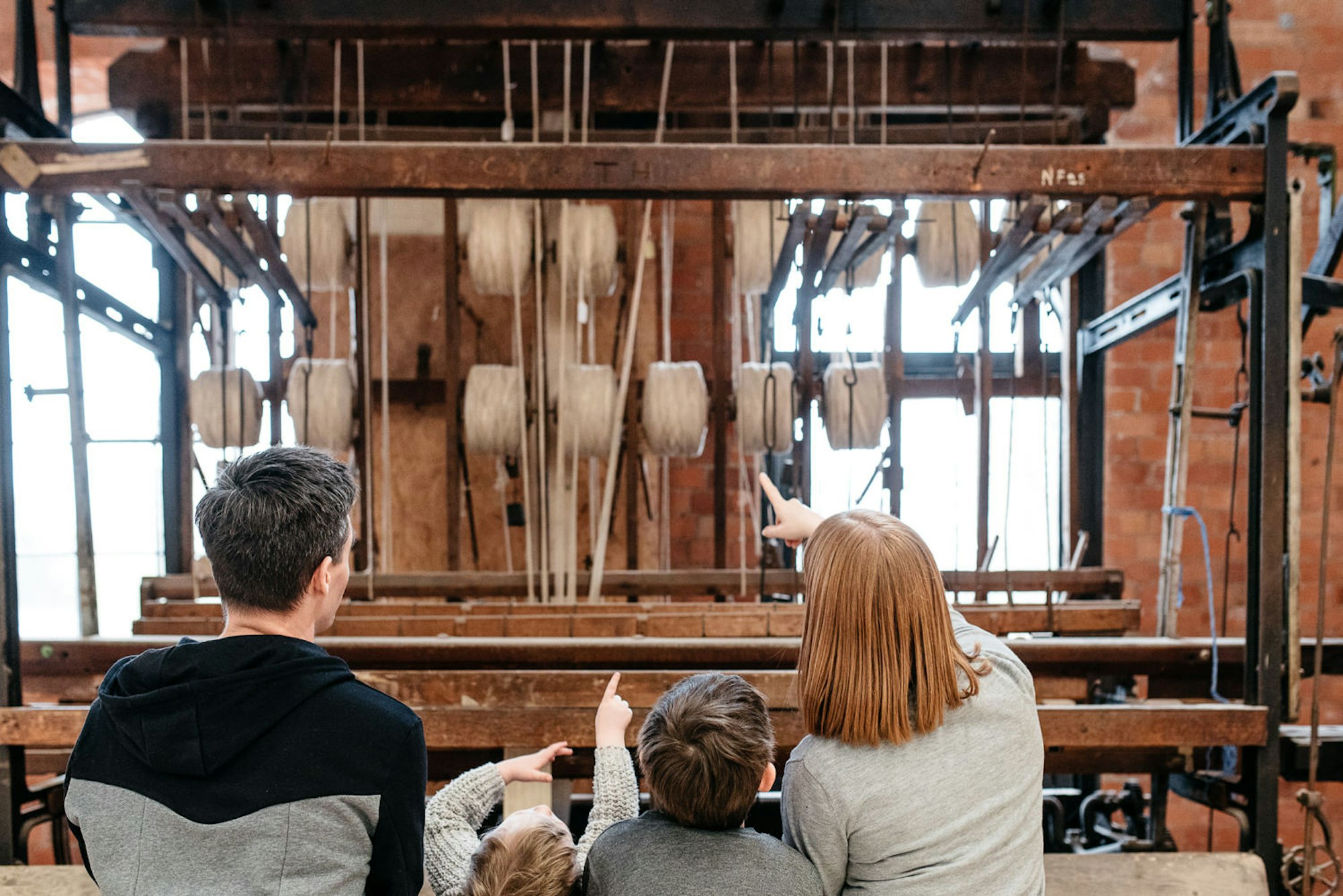Anne McKenzie: Part of Glasgow’s East End’s Fabric
Second in our series looking at women working in factories in Scotland

Perched on the corner of Dunn Street and Dalmarnock Road, Andrew Muirhead & Sons nestles on the site of Glasgow’s once heaviest of industrial areas. With its unchipped, burnt-red brick front having stood the test of time, behind the unassuming doorway lies a 10,000 sq ft sanctum of world-recognised leather manufacturing dating back to 1870.

While Dalmarnock has received its own mini aesthetic and infrastructural facelift - underwritten in most part by Glasgow’s hosting of the Commonwealth Games - the former flax and jute mill site is a stalwart of the area with most longterm residents having known someone employed by the firm at some time or another.
Born and bred within a couple of miles of Dunn Street, Anne McKenzie has staked a claim in Andrew Muirhead & Sons’ recent history having worked at the manufacturer for over a decade. With her infectious laugh and playful glint, Anne is the epitome of Glasgow’s East End at its no-nonsense best.
On any given weekday, Anne can be found in the firm’s Swatch Department where behind the counter she holds court over her little patch of responsibility. Having paid her dues to factory work since leaving school, Anne says, “With the exception of a couple of shops, I’ve worked in manufacturing since I was 15 years old.”

Kicking off her employment in the mid-1970s, Anne has worked behind the doors of some of Glasgow’s best-known local manufacturers. “Before I joined Andrew Muirhead, I worked just over a year in a biscuit factory. I hated it with a passion, honest to God, with a passion. I was only earning £4.20 and it was with an agency and the water used to run off me.”
Anne oozes Glasgow’s East End from her pores, in the way she speaks, in the way she laughs, in the way she shares a story. In that beautifully matter-of-fact Glaswegian delivery, she relays with consummate pride her role within Scotland’s leading leather manufacturer and supplier. “Sometimes I work on the factory floor but it’s mostly in the Swatch Department. The first job I did was padding. If we got a hide and it was all marked, we had to blend in the colour to take away the effect of the marks.”
In the late-1960s, Andrew Muirhead and Son, as a limited company, completed the formation of the Scottish Leather Group, a privately owned company with five specialist leather manufacturing subsidiaries. Today the site in Dalmarnock employs over 100 staff. There are no moccasin slippers nor leather key rings shipped from the loading bay here. Manufacturing the finest quality leather upholstery for the aviation, marine and automotive industries involves a complex and detailed process, applied by the craftsmanship of a highly-skilled workforce.
For all-round simplicity, the full process is condensed into 16 key steps from the raw material stage of carefully sourcing and collecting hides mostly from unbranded cattle herds - usually within 300 miles of the factory - through to the offer a next day delivery service for goods despatched from the expansive warehouse department.
When it comes to lending her hand to the perpetual process, Anne explains, “I’ve done all kinds of roles in the factory. I did the cuttings for British Airways’ upholstery. I’ve worked on the machines, on the presser, the lazer etcher computer, you name it.”
Asked whether she feels manufacturing is an equal place for women, Anne replies, “Aye, I would say it’s equal.” She laughs and winks that wink of hers, “I mean, what a man can do a woman can do, am I right?”
There’s a story that occurs to Anne in the same moment. She explains it’s her one and only tale about being riled in the workplace. “There was just one time,” her face turns serious for a second, “when I worked in a company that made radiators. I got put down to the warehouse, and I was up and down ladders all day.”
“I’d been working on the job all week but when I came in to find one of the lads who wasn’t in as long as me had been given overtime on the Sunday and they said it was “because it was a man’s job” and I said “oh, it’s a man’s job, is it?” Well I was raging. I said to the supervisor, what are you going to do about it. He says, “it’ll no happen again.” Of course, I says, “Aye you’re right it’ll no.””
It’s clear Anne has never suffered a fool gladly in her working years despite all the pep and good humour. Full of anecdotes and insight, she shares her views on women in the workplace through her own experience. “Of course, there’s always been roles for women in manufacturing as far as I can see, though see when it comes to the younger ones, it’s like they don’t want to work.
“I’ve got one beside me and she’s 19 and she says “what time do you start at?” And I say “half past seven til quarter past four,” so I’m up at six every morning. And she says “Oh I don’t know how you can do it.” She says “How many days do you work?” I say five and she says “On I don’t know how you can do it.” They don’t know they’re living.”
Anne thrives in the culture that’s been cultivated at Andrew Muirhead. Her colleagues are her “pals” in that very Glaswegian sense of the word. With camaraderie and communication key, Anne shares a gamut of unforgettable high-jinx during her time among finest leather. “One day Carol jumped out a big box at me down in the packing, and then there was the time they put a bit of leather in my shoe and I thought it was a rat. I was squealing I tell you. Later I was killing myself with laughter.”
Looking to the future, Anne shares a philosophical view of the direction of local manufacturing. “I don’t think there will be a lot of new roles,” she says. “See with all this technology coming in, in about 10-20 years all those jobs might be away. I’m hoping am all wrong, right enough, as I’d like to see my grandchildren in here.”
She may not be the official poster girl for Andrew Muirhead & Sons, though surely there are few better compliments a employer can receive from a member of their staff, as Anne with all sincerity completes her story full circle by saying, “Am planning to stay here until I retire or die, either way they’ll be taking me out with the bricks.”
Check out another article in the series: A life in lace, Cat Cochrane interviews Margo Graham, about her journey from copier to design director at MYB Textiles
You can also take a look at Andrew Muirhead and Son's full listing here
Categories
Article
Related stories
Why Make Work Locally
Alan Moore and Ten30 Fashion
Tips for Manufacturing in Scotland
A Life in Lace
In the Belly of the Beast: my one year manufacturing for Coca Cola



